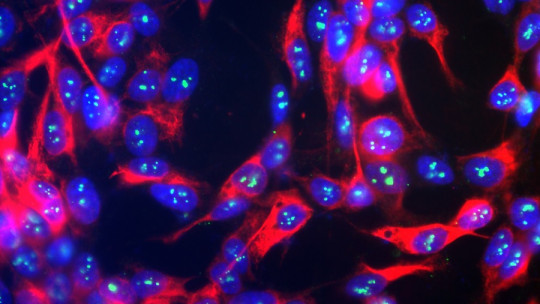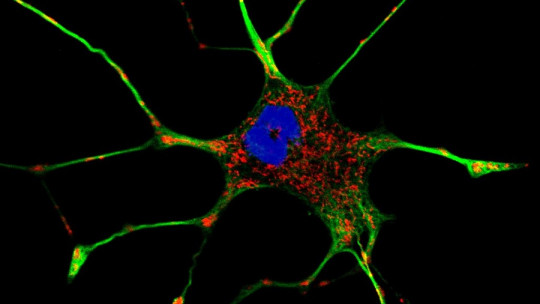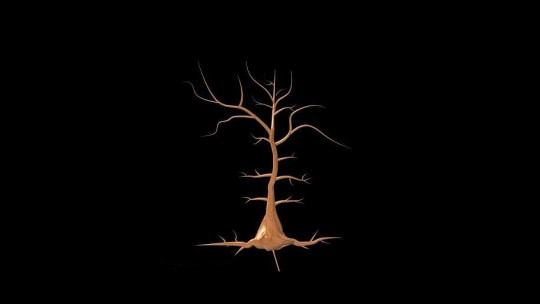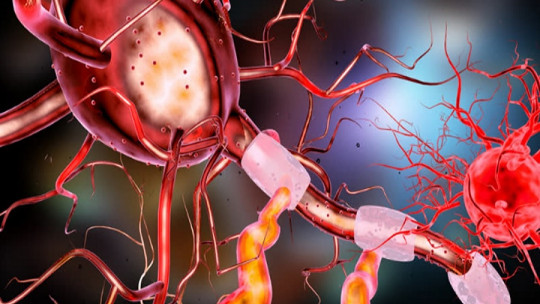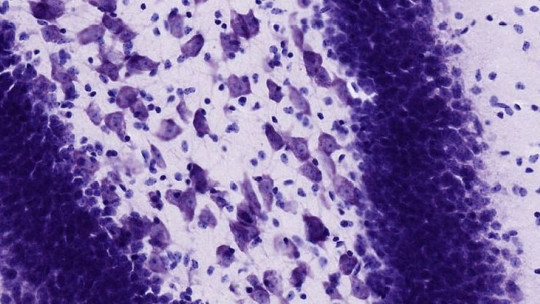Neurofilaments are a type of intermediate filaments 7 nanometers thick present in the cytoplasm of neurons. They are involved in the maintenance of neuronal structure and axonal transport.
Sometimes, biological structures hold many more secrets than we initially believe. In the world of nature, knowledge is practically infinite, as it covers morphological layers and layers until we reach the most basic compounds of any living being, amino acids and the chemical elements that make them up. To what level do we want to reach in this search for knowledge?
On the one hand, we have the neurons with their delimited sections (axon, dendrites and soma), the communication between them through synapses, neurotransmitters and their effects on the brain. All of these topics have already been widely covered, but we can still dig deeper. On this occasion, we take the opportunity to show you everything you need to know about neurofilaments
Neurofilaments: the neuronal skeleton
It is incredible to know that the skeleton of living beings is made up of cells, but that they also need their own “skeletal structure” to maintain their shape and functionality. That is to say, We find complex organization even in the most basic functional unit that life gives us
Since we cannot address the role of neurofilaments without first understanding the structural organization of a cell, we are going to pause for a moment on the cytoskeleton and its function.
About the cytoskeleton
The cytoskeleton is defined as a three-dimensional network of proteins that provides internal support in cells , but which also intervenes in the transport of compounds, organization and cell division. Making an analogue with the observable macroscopic world, This complex network would act like the beams of a building, but also like the elevator and stairs Incredible true?
The cytoskeleton is made up of three main compounds:
It should be noted that the structure and dynamics of the cytoskeleton depend on the way in which the cell relates to the outside (that is, the extracellular matrix) and the tension, rigidity and compression efforts that it experiences throughout its development. . We are facing a dynamic and not at all rigid framework, which adapts exquisitely to the process that the cell is undergoing at any given moment Now, how are neurofilaments related to everything discussed above?
Navigating in the cytoplasm
The answer to the previous question is simple, since these structures that concern us today are nothing more than intermediate filaments of the cytoskeleton specific to neurons.
Like the rest of the cells, Neurons have a skeleton with both structural and transport functions This protein framework is made up of three components, very similar to those we have described previously, as they are microtubules (or neurotubules), neurofilaments (intermediate filaments) and microfilaments. Before getting lost in the morphology of these structures, let’s define the functions of the neuronal cytoskeleton:
As we can see, Without this protein framework, neurons (and therefore human thought) could not exist as we know them Today. To understand the structure of a neurofilament we have to broadly dissect its morphology down to a basal level. Go for it.
First we must know the most basal “brick” of the structure, cytokeratin This is an essential fibrous protein in the intermediate filaments of epithelial cells, as well as the nails, hair and feathers of animals. The association of a set of these proteins in linear form gives rise to a monomer, and two of these chains coiled around each other, to a dimer.
In turn, two coiled dimers give rise to a thicker structure, the tetrameric complex (tetra-four, since it is made up of a total of four monomers). The union of several tetrameric complexes forms a protofilament, and two protofilaments united, a protofibril. Finally, three coiled protofibrils give rise to the desired neurofilament.
Thus, to understand the structure of this intermediate filament we have to imagine a series of chains coiling around themselves to give an “analogous” structure (apart from incredible distances) to the DNA double helix known to all. Every time More and more interconnected chains are added to each other, increasing the complexity of the structure and its thickness As with electrical wiring, the more chains and the more windings, the greater the mechanical resistance of the final framework.
These neurofilaments, with a dizzying structural complexity, are distributed in the cytoplasm of the neuron and generate junction bridges with the neurotubules and connect the cell membrane, mitochondria and polyribosomes. It should be noted that they are the most abundant components of the cytoskeleton, as they represent the internal structural support of the neuron.
Practical cases
Not everything is reduced to a microscopic world, since the composition of the cytoskeleton, as surprising as it may seem, conditions the responses of living beings to the environment and the effectiveness of their nervous transmissions
For example, studies have investigated the abundance of neuronal intermediate filaments in rodent mammals after brain injuries and subsequent exposure to low-intensity laser therapies and ultrasound for therapeutic purposes. Nerve damage is correlated with a decrease in neurofilaments within each neuron since this type of mechanical stress decreases the caliber of the axon and the “health” (for lack of a more complex term) of the cell subjected to the trauma.
The results are revealing, since the mice that were subjected to the therapies described increased the number of these filaments at the cellular level. These types of experiments show that Low-intensity laser (LBI) therapies may play an essential role in the regeneration of injured nerves after trauma.
Beyond the microscopic world: filaments and Alzheimer’s
We go further, because beyond experimental studies with laboratory rodents, the effect of the composition and number of component filaments of the cytoskeleton on diseases such as Alzheimer’s has been investigated.
For example, the serum concentration of light neurofilament (Nfl) is increased in people with familial Alzheimer’s before the symptoms of the disease even begin to appear. Therefore, these could act as non-invasive bioindicators of the pathology to control it from the earliest stages. Of course, more information and study is still required to cement this knowledge, but the foundations have already been laid.
Summary
As we have seen, the world of neurofilaments is not only reduced to a structural protein framework. We move at nanoscopic scales, but clearly the effects of the abundance of these essential components of the neuronal cytoskeleton are expressed at a behavioral and physiological level in living beings.
This highlights the importance of each of the elements that make up our cells Who was going to tell us that a greater abundance of a specific filament could be an indicator of the early stages of a disease like Alzheimer’s?
In the end, Each small component is another piece of the puzzle that gives rise to the sophisticated machine that is the human body If one of them fails, the effect can reach levels much broader than the few micrometers or nanometers that this structure can occupy in a physical space.

